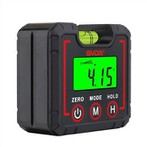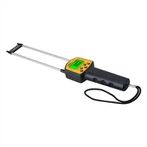The principle of a toxic and harmful gas detector
According to the hazards, we classify toxic and harmful gases into two categories: combustible gases and toxic gases. Due to their different properties and hazards, their detection methods also vary.
Combustible gases are the most hazardous gases encountered in industrial settings such as petrochemicals, mainly organic gases such as alkanes and certain inorganic gases such as carbon monoxide. The explosion of combustible gases must meet certain conditions, namely: a certain concentration of combustible gases, a certain amount of oxygen, and sufficient heat to ignite their ignition source. These are the three essential elements of explosion, none of which are indispensable. In other words, without any of these conditions, fire and explosion will not occur. When combustible gases (steam, dust) and oxygen are mixed and reach a certain concentration, an explosion will occur when encountering a fire source with a certain temperature. We refer to the concentration of combustible gases that can explode when they come into contact with a fire source as the explosion concentration limit, abbreviated as the explosion limit, which is generally expressed in%. In fact, this mixture does not necessarily explode in any mixing ratio and requires a concentration range. When the concentration of combustible gas is below LEL (* low explosion limit) (insufficient combustible gas concentration) and when its concentration is above UEL (* high explosion limit) (insufficient oxygen), no explosion will occur. The LEL and UEL of different combustible gases are different (see the introduction in the eighth issue),
This should be taken very seriously when calibrating the instrument. For the sake of , we should generally issue an alarm when the combustible gas concentration is 10% and 20% of LEL, where 10% LEL is referred to. Make a warning alert, and 20% LEL is called a danger alert. That is why we refer to combustible gas detectors as LEL detectors.
It should be noted that, The 100% displayed on the LEL detector is not that the concentration of combustible gas reaches 100% of the gas volume, but that it reaches 100% of the LEL, which is equivalent to the lower explosive limit of combustible gas. If it is methane, 100% LEL=4% volume concentration (VOL). In operation, the detector that measures these gases in an LEL manner is a common catalytic combustion detector. Its principle is a dual bridge (commonly referred to as a Wheatstone bridge) detection unit. One of these platinum wire bridges is coated with catalytic combustion substances. Regardless of the flammable gas, as long as it can be ignited by the electrode, the resistance of the platinum wire bridge will change due to temperature changes. This resistance change is proportional to the concentration of the flammable gas. The concentration of the flammable gas can be calculated through the instrument's circuit system and microprocessor. A thermal conductivity VOL detector that directly measures the volume concentration of combustible gases can also be obtained on the market, and there are already detectors that combine LEL/VOL. VOL combustible detectors are particularly suitable for measuring combustibles in oxygen deficient environments






